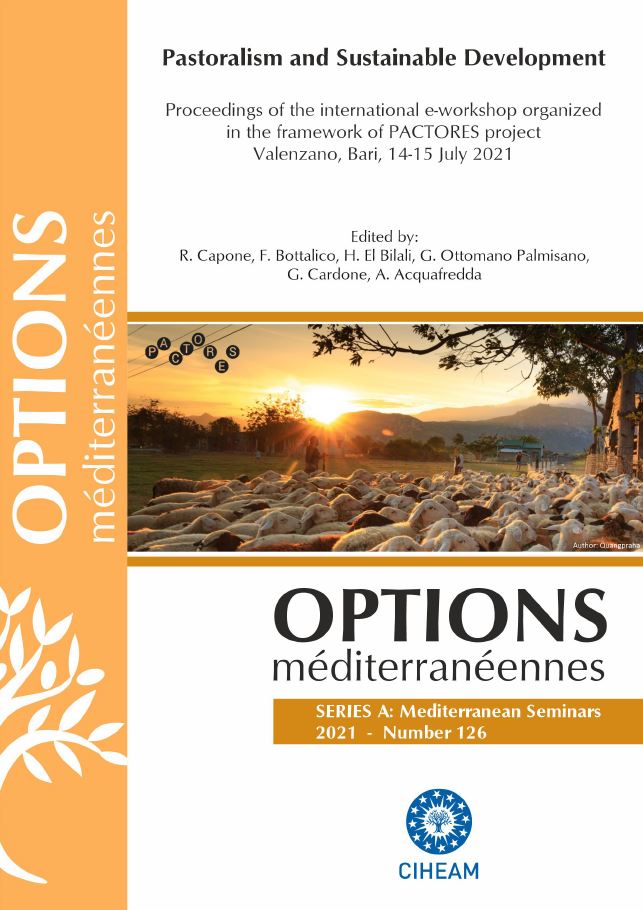| Article précédent | p. 201-210 | Article suivant |
Identification and mapping of migration routes of transhumance communities using Geographic Information System in the Western Mediterranean Region in Turkey
Turkey's nomads, replaced periodically to graze their goats in the basin of the Mediterranean Region for many years. Hair goat breeding for nomads is both a production system and a cultural value symbol. Nomads who drives the immigrant life style, has come to the Turkish water front. Economy for nomads is based on animal breeding. Geographical mobility and animal breeding are two important factors affecting and shaping the nomadic life style. During these migrations, animals have to graze every day at certain times. For this reason, they cannot travel continuously. For this reason, migrants cannot travel more than 4-5 hours per day. The roads on the Taurus Mountain are generally available, but do not provide access to thousands of animals. The study site is located between 31°4'10 "and 38°27'50" northern latitudes and between 32°33'48 "and 36°3'30" east longitudes. The migratory routes of livestock farming communities from Geographical Information Systems (GIS), ArcGIS package program and Google Earth program. In addition to these, topographical maps and landscaping plans and maps of the Isparta and Antalya Forest Regional Directorates will be utilized. With multifunctional GPS, coordinate values (including x, y values) and length measurement of migration paths can be saved and uploaded as data to related programs. All the data obtained with these maps and observations were transferred to the computer with the GPSTrackMaker program and important points were determined and the migration paths were drawn with the joining of points (vector). According to the migratory patterns made by the nomads, "Small Ruminant Operation Types" were determined. These were (1) Small Scale Sheep Enterprises, (2) Large Scale Sheep Enterprises, (3) Small Local Migration Mixed Farming Enterprises, (4) Long Distance Regional Migrations Goat Enterprises.
Les nomades de Turquie, remplacés périodiquement pour faire paître leurs chèvres dans le bassin de la région méditerranéenne pendant de nombreuses années. L'élevage de chèvres à poils pour les nomades est à la fois un système de production et un symbole de valeur culturelle. Les nomades qui conduisent le style de vie des immigrés, sont venus sur le front de mer turc. L'économie des nomades est basée sur l'élevage. La mobilité géographique et l'élevage sont deux facteurs importants affectant et façonnant le mode de vie nomade. Lors de ces migrations, les animaux doivent paître tous les jours à certaines heures. Pour cette raison, ils ne peuvent pas voyager en continu. Pour cette raison, les migrants ne peuvent pas voyager plus de 4 à 5 heures par jour. Les routes de la montagne Taurus sont généralement disponibles, mais ne permettent pas d'accéder à des milliers d'animaux. Le site d'étude est situé entre 31°4'10" et 38°27'50" de latitude nord et entre 32°33'48" et 36°3'30" de longitude est. Les routes migratoires des communautés d'éleveurs issues des Systèmes d'Information Géographique (SIG), du progiciel ArcGIS et du programme Google Earth. En plus de ceux-ci, des cartes topographiques et des plans d'aménagement paysager et des cartes des directions régionales des forêts d'Isparta et d'Antalya seront utilisés. Avec le GPS multifonctionnel, les valeurs de coordonnées (y compris les valeurs x, y) et la mesure de la longueur des chemins de migration peuvent être enregistrées et téléchargées en tant que données vers des programmes associés. Toutes les données obtenues avec ces cartes et observations ont été transférées à l'ordinateur avec le programme GPSTrackMaker et les points importants ont été déterminés et les chemins de migration ont été tracés avec la jonction des points (vecteur). Selon les schémas migratoires établis par les nomades, des « types d'exploitation des petits ruminants » ont été déterminés. Il s'agissait de (1) petites entreprises ovines, (2) grandes entreprises ovines, (3) petites entreprises agricoles mixtes à migration locale, (4) entreprises caprines à migration régionale longue distance.
- [ Télécharger ]
- [ Exporter la citation ]
Vous pouvez télécharger la citation au format :
- [ Imprimer ]
- [OMA126]




